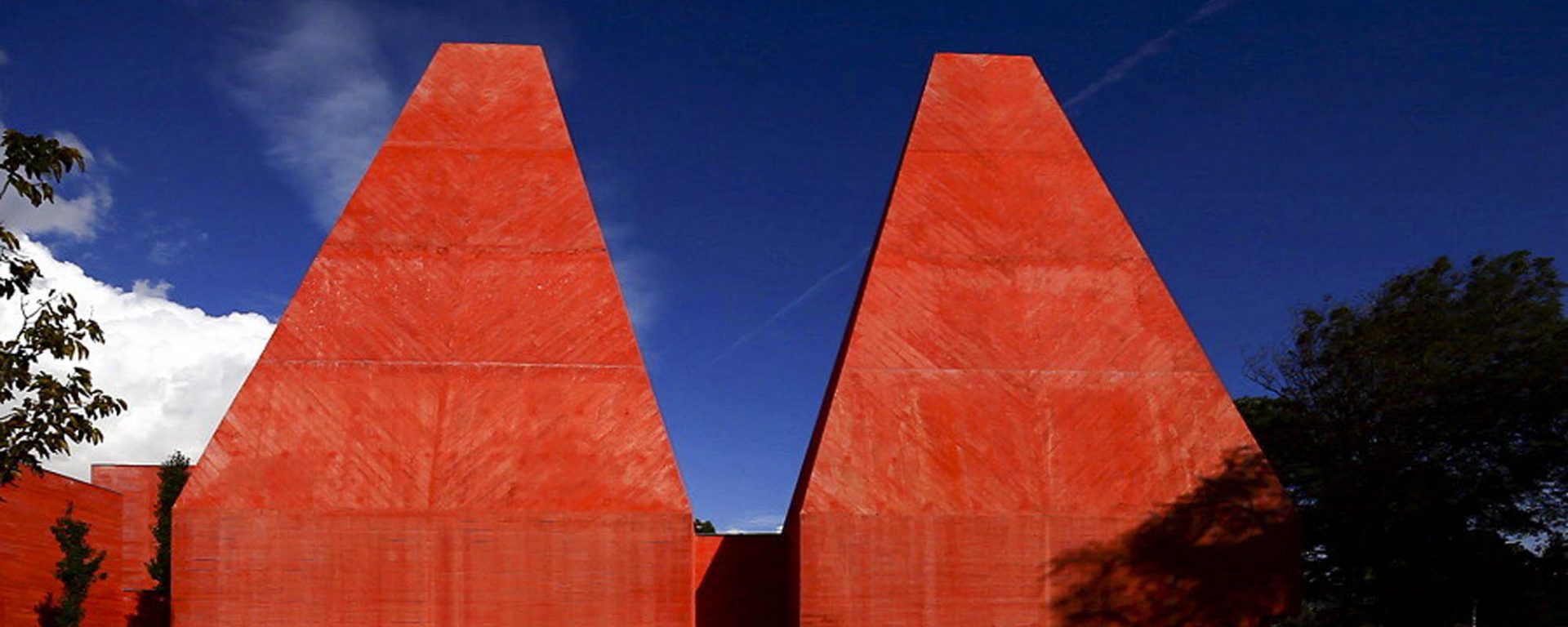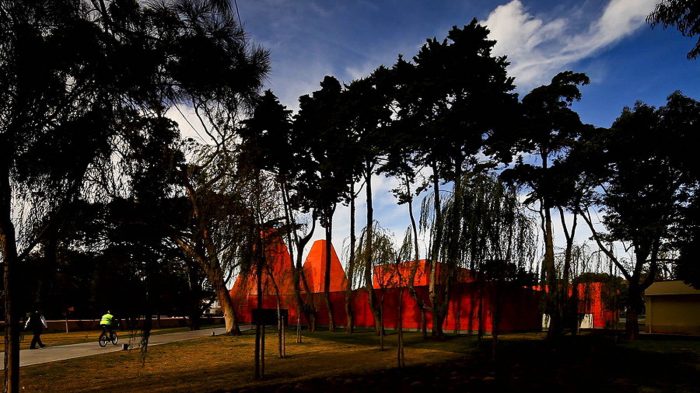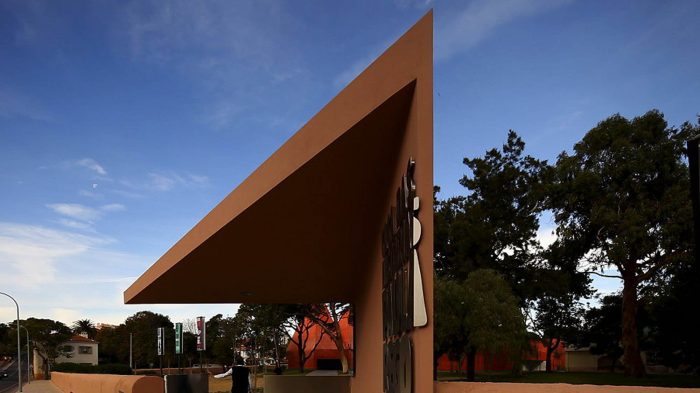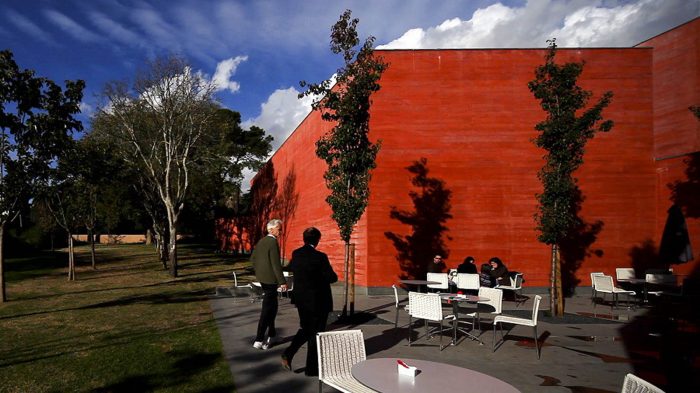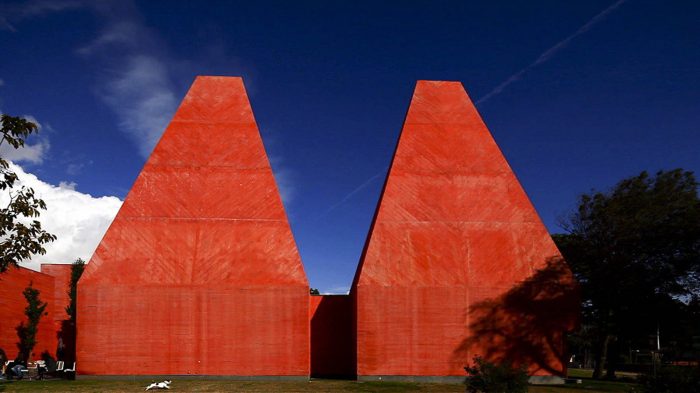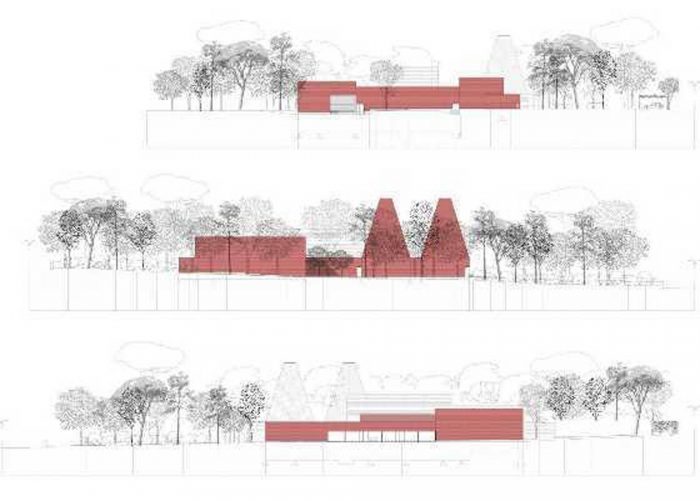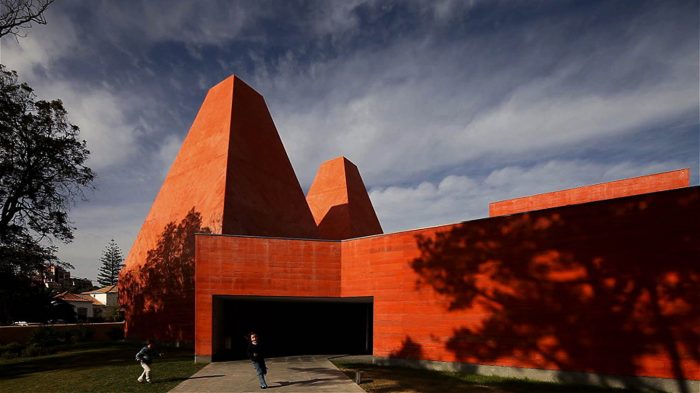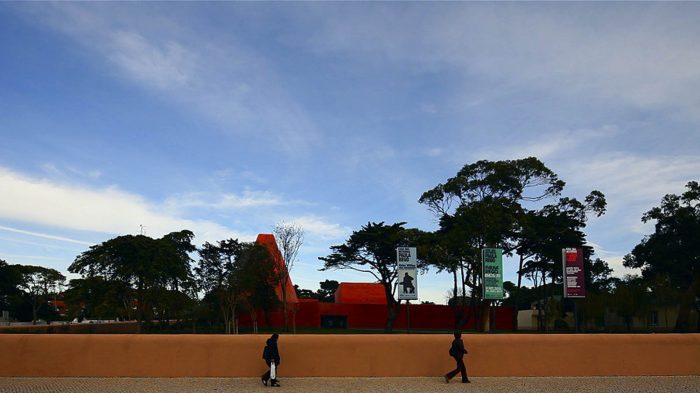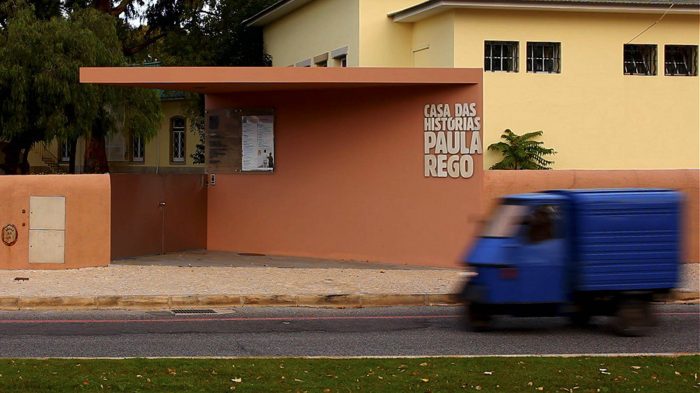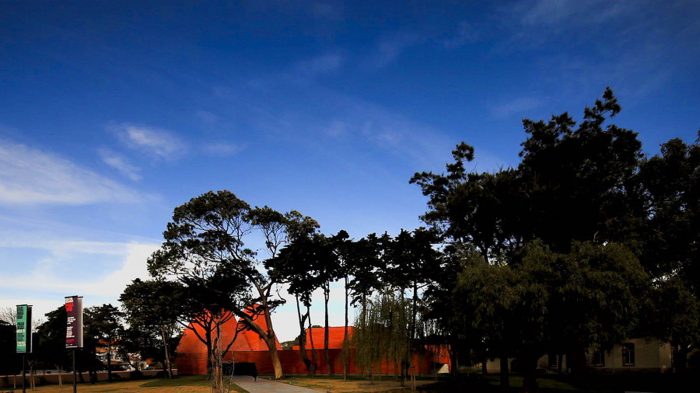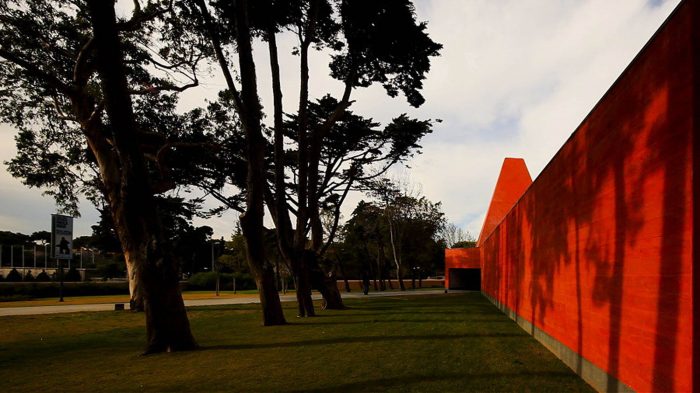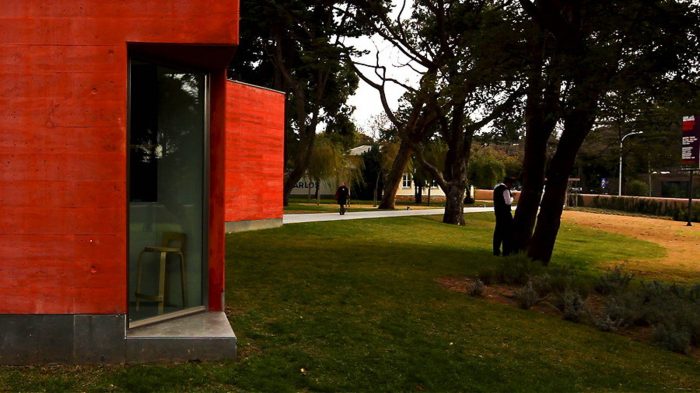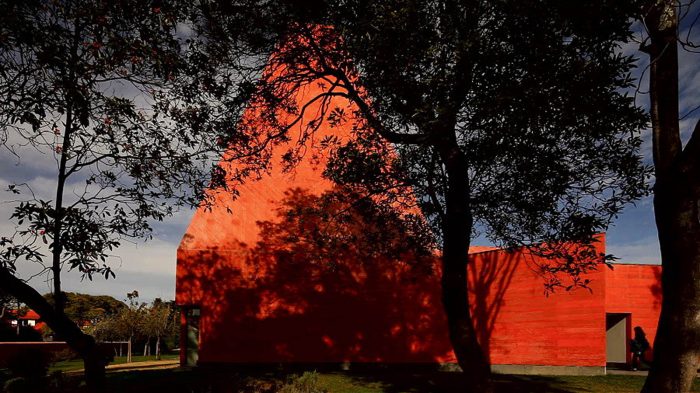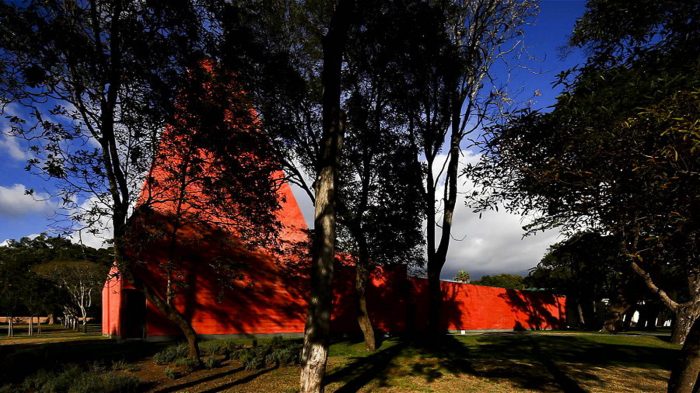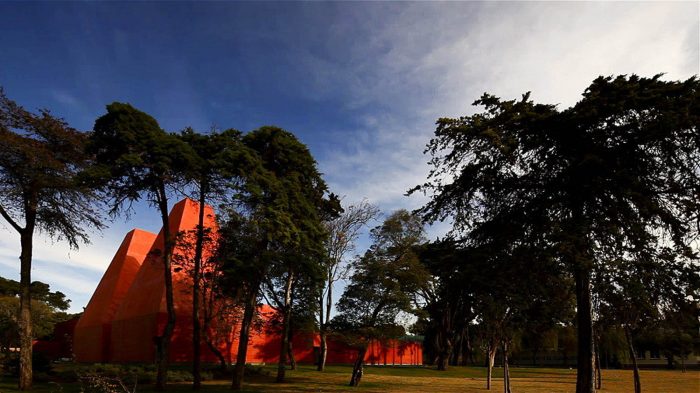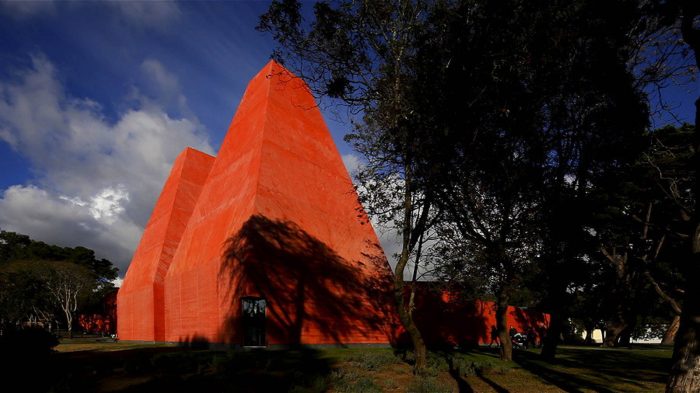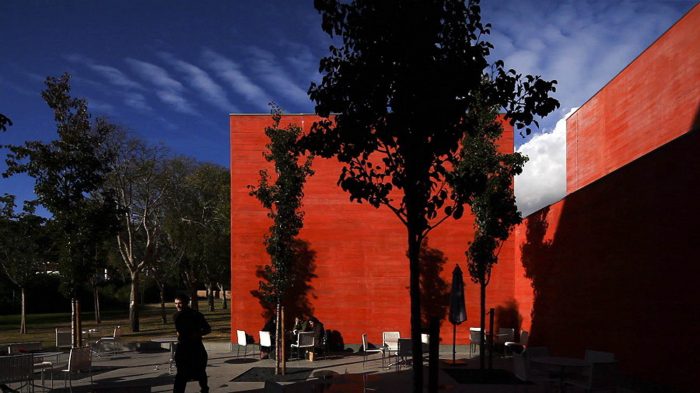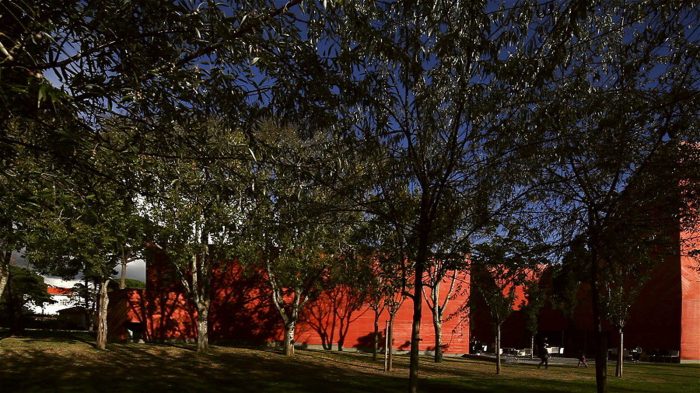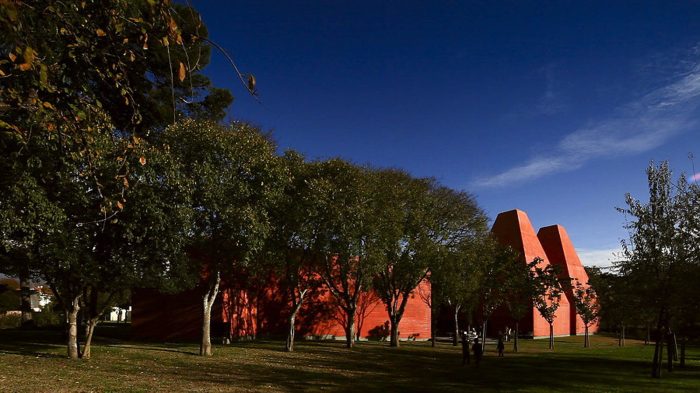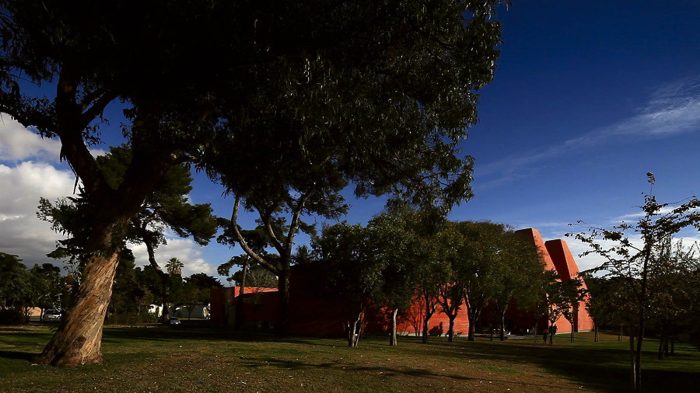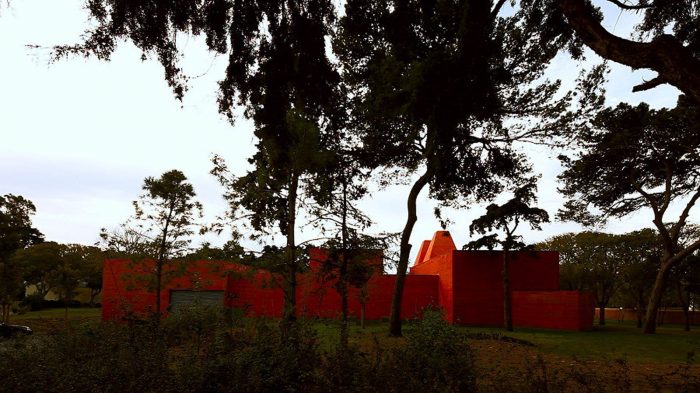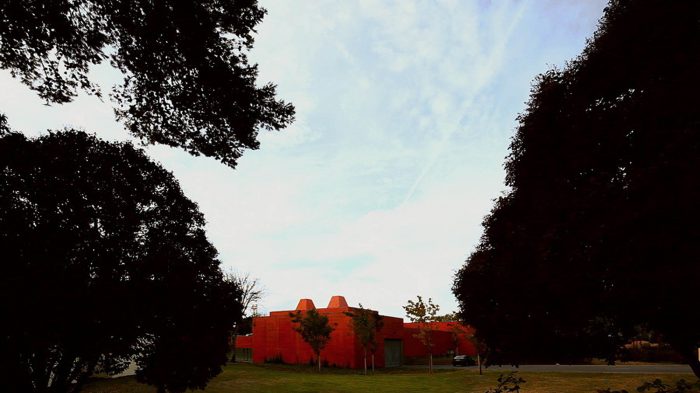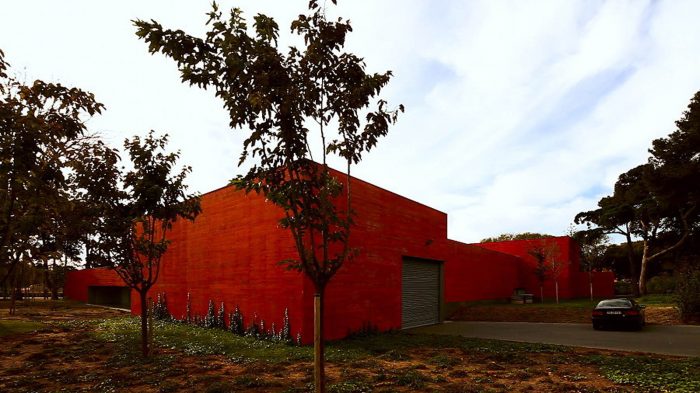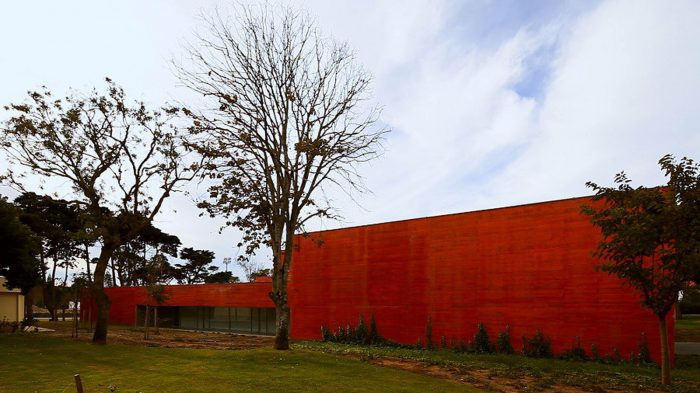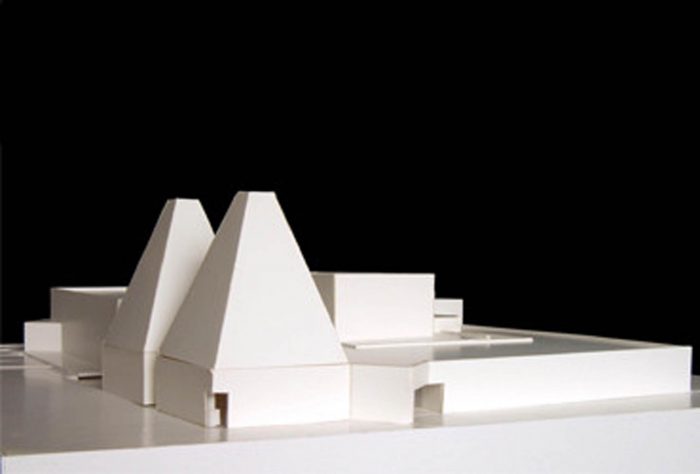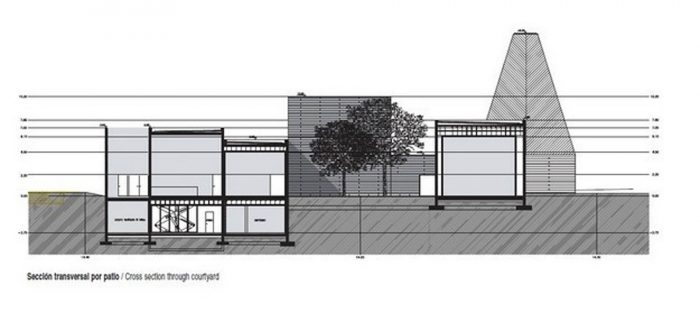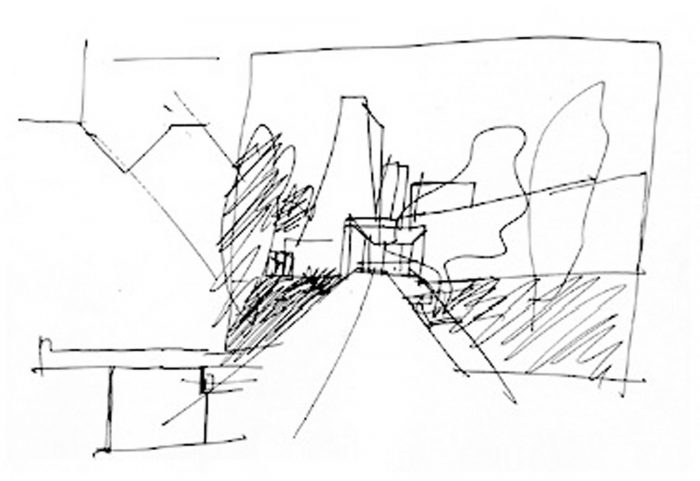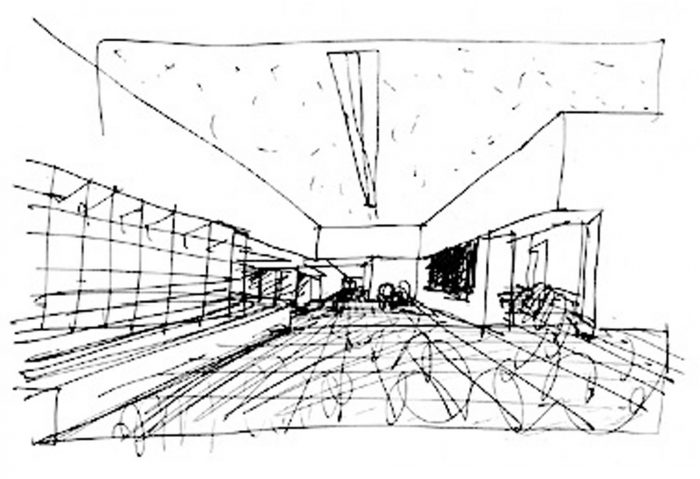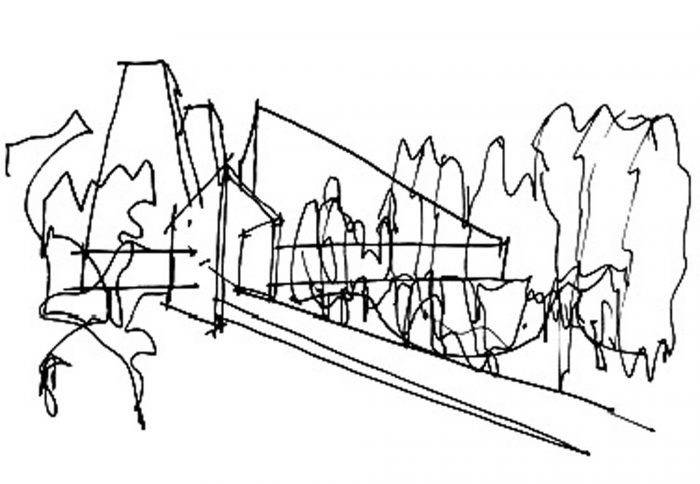Casa das Historias Paula Rego由建筑师Eduardo Souto de Moura设计。该建筑利用了该地区历史建筑的某些方面,并以现代方式进行了重新诠释。两座金字塔形的塔楼和建筑中使用的红色混凝土让人一眼就能认出它。
The Casa das Historias Paula Rego was designed by the architect Eduardo Souto de Moura. The building makes use of certain aspects of the region’s historical architecture, which is here reinterpreted in a contemporary way. It can be immediately recognised thanks to its two pyramid-shaped towers and the red-coloured concrete used in its construction.
场地上曾经存在的土地和树木被作为基本元素融入其中,而四个高低不一、大小不一的翼楼则构成了建筑。建筑本身被细分为若干个房间,这些房间相互通向,并围绕着较高的中央房间布置,其中设有临时展览。建筑内部除了技术和服务区外,还有750平方米的展览空间,以中性色调装饰,铺设了卡斯卡伊斯的蓝灰色大理石。建筑物内还设有一个商店、一个通向青翠花园的咖啡馆和一个可容纳200人的礼堂。
The land and trees which previously existed at the site are incorporated as fundamental elements, while four wings, of varying heights and sizes, make up the building. The building itself is subdivided into rooms which lead into one another and are laid out around the higher central room which houses the temporary exhibition. The building’s interior has 750m2 of exhibition space, on top of the technical and service areas, and is decorated in neutral shades and paved with the blue-grey marble of Cascais. The building also houses a shop, a café which opens onto a verdant garden and an auditorium with 200 seats.
该建筑的设计完全符合艺术家的意愿,而保罗-雷戈本人则负责选择建筑师。它满足了博物馆及其各种功能的所有要求,同时又不忘给游客一个热情的欢迎。
The building’s design is fully in keeping with the artist’s wishes, and it was Paul Rego herself who was responsible for the choice of architect. It meets all the requirements for a museum and its various functions, without forgetting the need to give visitors a warm welcome.
“对于Casa das Historias,可以说Eduardo Souto de Moura采用了几乎是’区域主义’的方法,与现代抽象主义拉开了距离,而现代抽象主义一直是他作品的主要特征。然而,这是一种不加批判的区域主义,避免了 “抵制 “的意识,而这种意识是20世纪80年代葡萄牙其他尝试的背后。在这个为卡斯卡伊斯建造的博物馆中,Souto de Moura将某些形式上的装置与建筑构图的传统联系在一起,采用特定的公式将建筑插入周围的区域,并使用规模,这可以很容易地在一个非常特殊的地理环境中进行。因此,它与劳尔-利诺的作品非常接近,被设置在一个 “南方 “的景观中,而没有诉诸任何不必要的装饰或图画的修饰。”
“With the Casa das Historias, it can be said that Eduardo Souto de Moura has adopted and almost ‘regionalist’ approach, distancing himself from the modem abstractionism that has been a dominant feature of his work. It is, however, an uncritical regionalism, that avoids the sense of ‘resistante’ which lay behind other attempts at the approach in Portugal in the 1980s. In this museum created for Cascais, Souto de Moura associates certain formal devices with a legacy of architectural composition, adopting specific formulas for the building’s insertion in the surrounding area as well as a use of scale which can be easily contextualised in a very specific type of geography. Its close proximity to the work of Raul Lino is therefore set in a “Southern” landscape, without resorting to any unnecessary decorative or picturesque frills.”
“通过这个博物馆,Souto de Moura开发了一种 “现代建筑 “的形式,事实上,没有重复任何 “旧模式”–与Aldo Rossi在其科学自传中所捍卫的理念保持一致–从城市图标中唤起永恒的原型:塔楼、灯塔、筒仓和烟囱,就像定义辛特拉宫轮廓的那些。因此,如果继续 “类比 “的话,苏托-德-莫拉在描述这座博物馆时,也提到了劳尔-利诺的宫殿的明显屋顶,或者 “居住的烟囱 “的概念,这并不奇怪。唤起了阿尔科巴卡修道院的厨房_事实上,在其最好的解释中,历史之家可以被看作是一个 “历史主义 “的项目,这种情况肯定会让Souto de Moura最忠实的追随者感到惊讶,也会让他最严厉的批评者感到困惑。 ”
“With this museum, Souto de Moura develops a form of “modern-day architecture” without, in fact, repeating any of the “old models” – in keeping with the ideas defended by Aldo Rossi in his scientific autobiography – evoking timeless archetypes from urban iconography: towers, lighthouses, silos and chimneys, like the ones that define the profile of the Palacio de Sintra. It is therefore not surprising, if one continues the “analogy”, that, when describing this museum, Souto de Moura also mentioned the pronounced roofs of Raul Lino’s palaces, or the idea of an “inhabited chimney”, evoking that of the kitchen in the monastery of Alcobaca_ In fact, in its best interpretation, the Casa das Historias can be seen as a “historicist” project, a condition that will certainly surprise Souto de Moura’s most faithful followers and confound his harshest critics.”
建筑师:Eduardo Souto de Moura
年份:2008年
摄影:Vítor Gabriel
制造商: UNIBETÃO
国家:葡萄牙
Architects: Eduardo Souto de Moura
Year: 2008
Photographs: Vítor Gabriel
Manufacturers: UNIBETÃO
Country: Portugal

